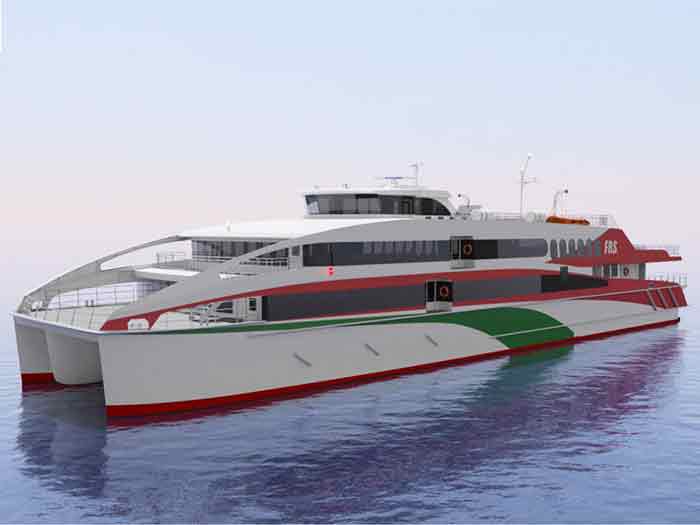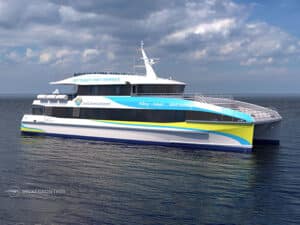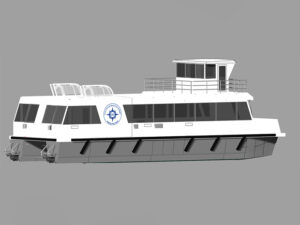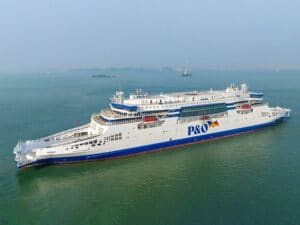
New FRS cat to have MTU engines and Kamewa waterjets
Written by Nick Blenkey
MAY 9, 2017 — Rolls-Royce has received an order from the Förde Reederei Seetouristik (FRS) Shipping Group in Flensburg, Germany, to supply four 16-cylinder MTU Series 4000 engines and four Kamewa S71 waterjets.
They have been chosen to power a new 56 m long catamaran to be constructed by Australian shipbuilder Austal’s Phillipines shipyard.
The new high-speed ferry is to replace the popular Halunder Jet operated by FRS Helgoline and takeover its Hamburg – Wedel – Cuxhaven – Helgoland route.
The FRS Shipping Group has favored MTU products for many years. The Halunder Jet, which is currently in service, and a further seven high-speed ferries operated by the shipping group on international ferry and catamaran lines, are all powered by MTU’s Series 4000, 2000 and 396 engines.
The Halunder Jet has been operating a shuttle service to Helgoland every day between April and October since 2003, and during this time has completed 22,000 hours of reliable operation.
The technical concept of the Series 4000 Ironmen engines was a major factor in the choice of engines for the latest ferry.. With its common rail fuel injection system, it is very economical and friendly to the environment. The robust Series 4000 Ironmen version was developed specifically for work boats in 2008 and is particularly liked for its extended maintenance intervals and low fuel consumption.
Jan Kruse, CEO of Förde Reederei Seetouristik said: “We made a conscious decision in favor of the Ironmen from MTU. We were very impressed by the extended maintenance intervals, combined with what is nevertheless an excellent power to weight ratio and the low fuel consumption. The MTU engines were thus the right choice for us, but their dynamic acceleration behavior was also a key factor, of course.”
The new design of the high-speed ferry also features several impressive key technologies, including an optimized hull form designed to minimize both fuel consumption and wake wash. This makes the catamaran ideal for operating on the River Elbe and on the North Sea between Helgoland and the Port of Hamburg.
The all-aluminum catamaran is scheduled to begin ferrying up to 692 passengers on each crossing as of spring 2018. Operating at speeds of up to 35 knots, it will increase daily capacity on the Hamburg – Helgoland catamaran line by 20 per cent compared with the Halunder Jet, which is currently in operation.
After it is retired from service, the Hallunder Jet will go to Clipper Navigation, an FRS subsidiary, and launch a new passenger ferry service between downtown Vancouver, BC and downtown Victoria, BC, in spring 2018.





Leave a Reply
You must be logged in to post a comment.